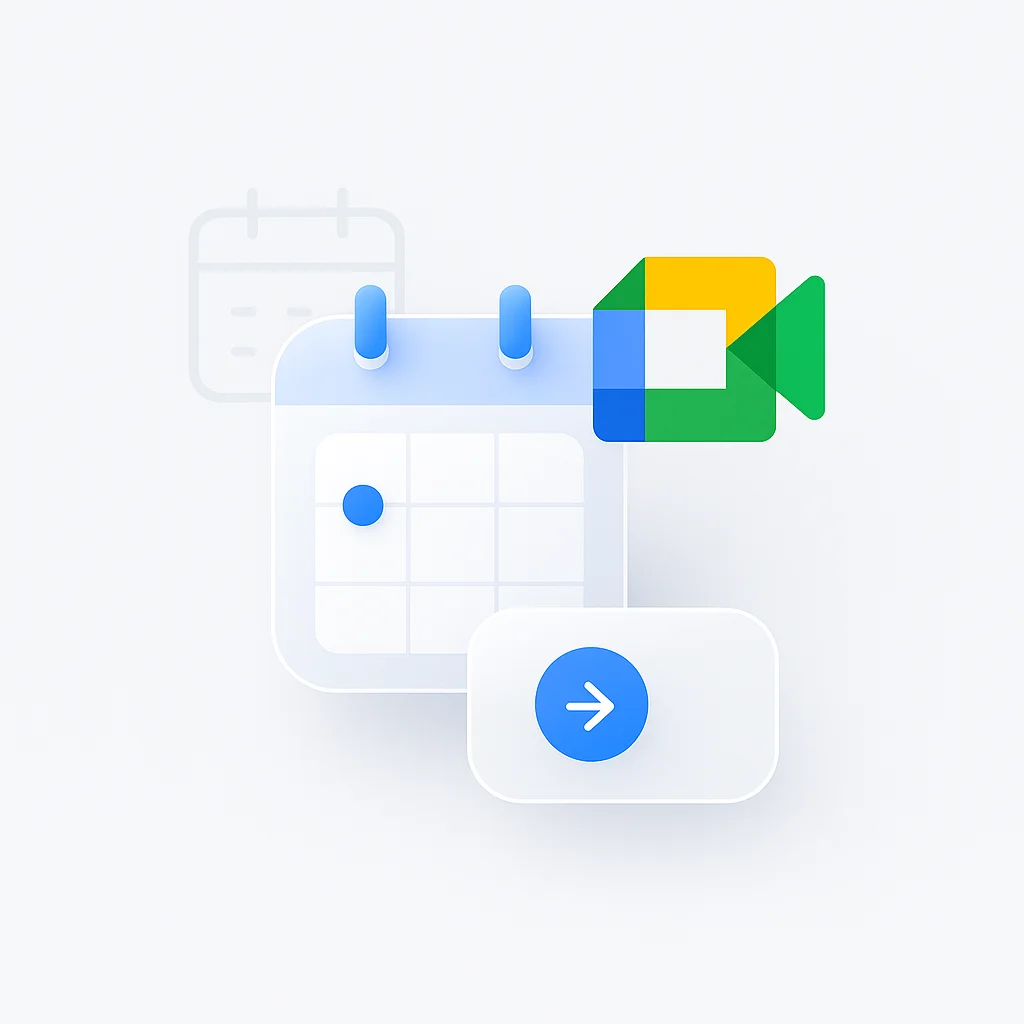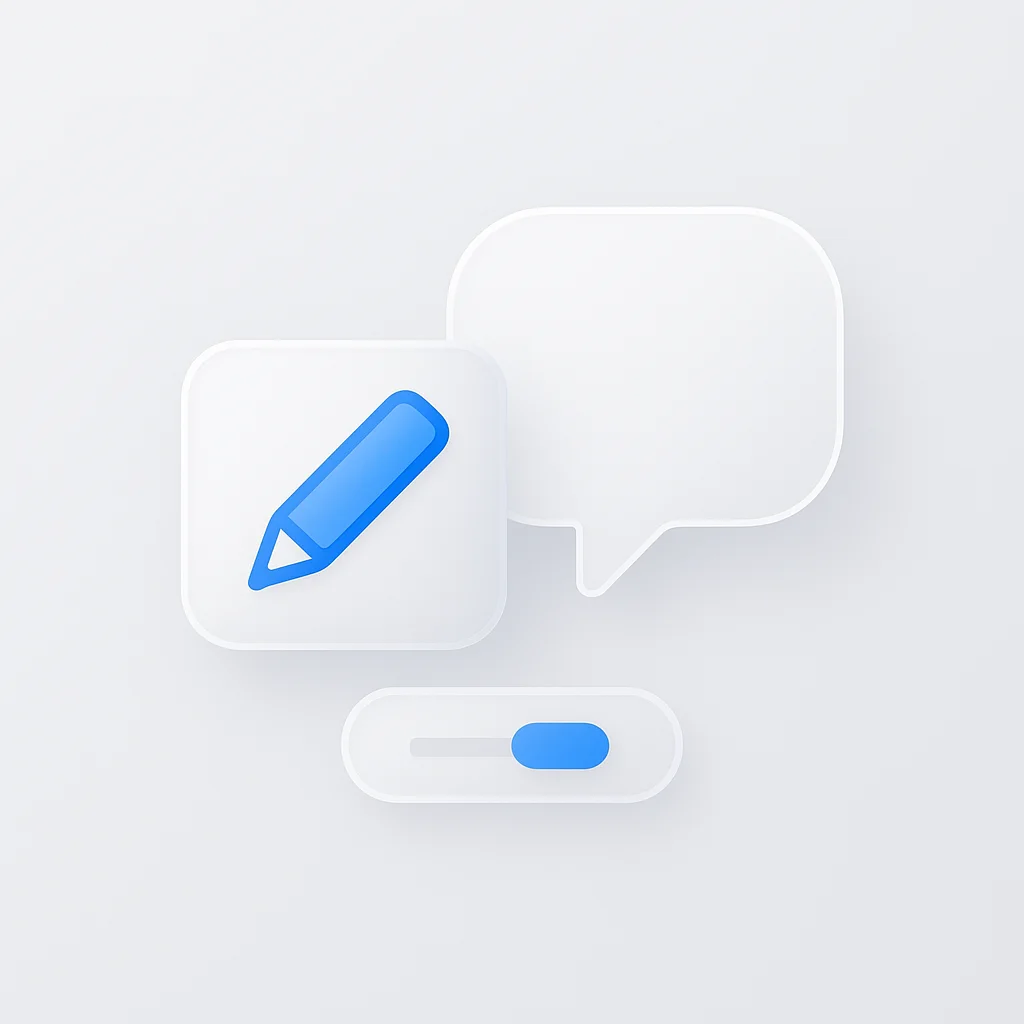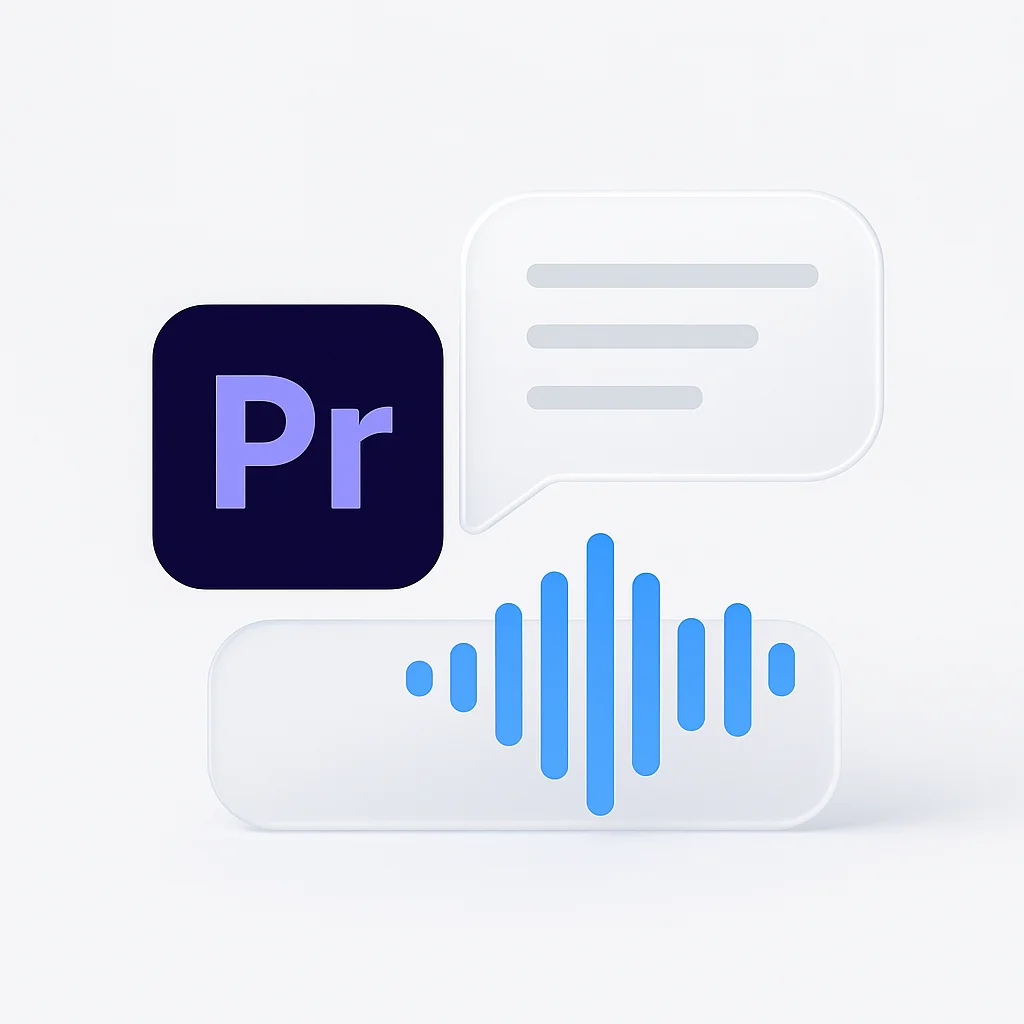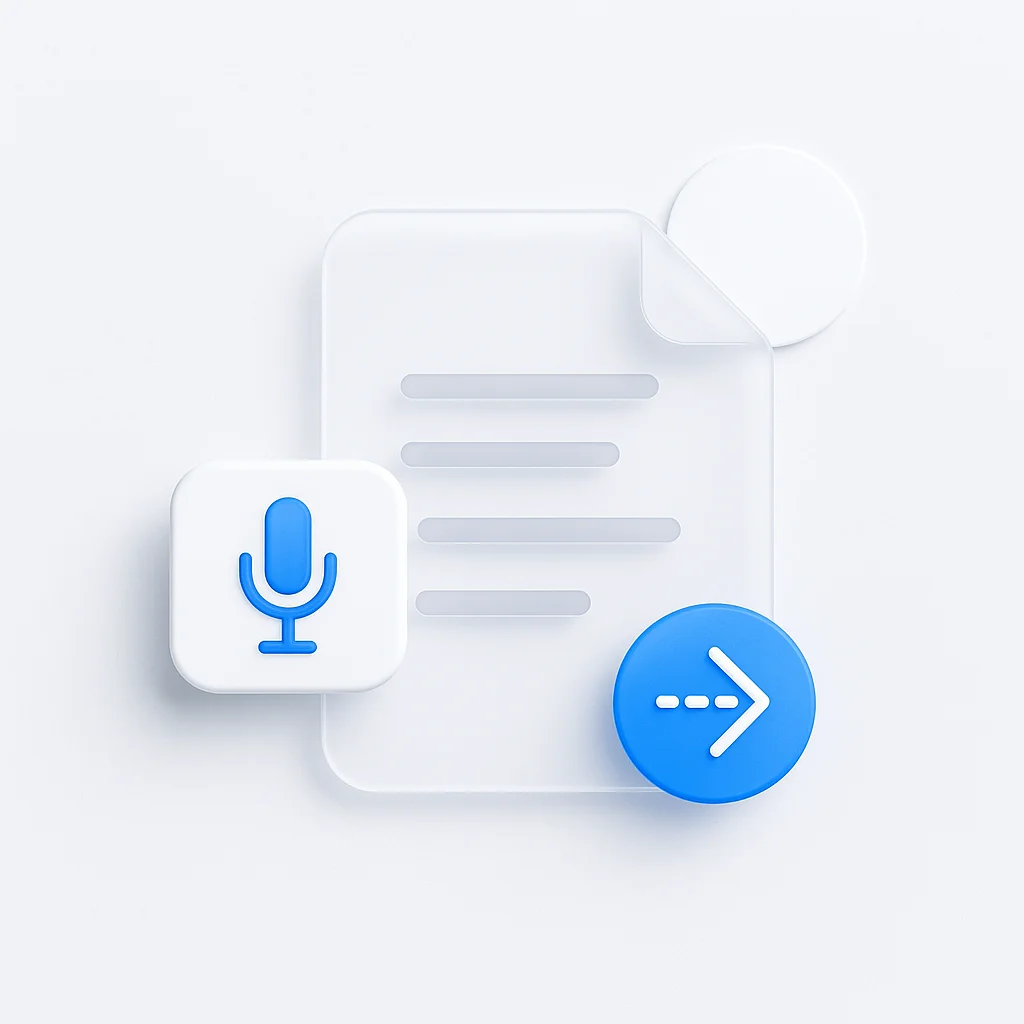Time is precious in today’s fast-paced business environment, and fumbling with meeting setup can cost valuable minutes and frustrate participants. Whether you need to start an impromptu team discussion or schedule a client presentation, mastering Google Meet’s quick setup features will streamline your workflow and enhance your professional efficiency. For a complete overview of Google Meet’s capabilities, explore our comprehensive guide to using Google Meet in 2025, which covers everything from setup to advanced features.
The Power of Instant Meeting Creation
Google Meet’s strength lies in its simplicity and speed. Unlike complex video conferencing platforms that require multiple steps and settings configuration, Google Meet is designed for immediate action while maintaining professional quality and security.
Why Speed Matters in Meeting Management
Business Impact:
- Reduces downtime between meetings
- Minimizes participant wait times
- Improves overall productivity
- Enhances professional image
- Decreases technical friction
User Experience Benefits:
- Less frustration with technology
- More focus on meeting content
- Smoother workflow transitions
- Better meeting attendance
- Increased adoption rates
Method 1: Instant Google Meet from Gmail
The fastest way to start a Google Meet is directly from your Gmail interface.
Step-by-Step Quick Start
From Gmail Sidebar:
- Open Gmail in your browser
- Look for “Meet” in the left sidebar
- Click “New meeting”
- Choose “Start an instant meeting”
- Your meeting opens immediately in a new tab
Sharing the Meeting:
- Copy the meeting link from the address bar
- Share via email, chat, or messaging apps
- Participants can join immediately with the link
- No advance scheduling required
Pro Tips for Gmail Method:
- Keep Gmail open for instant access
- Bookmark the Meet section for faster navigation
- Use keyboard shortcuts (G+M) for quicker access
- Pin frequently used meeting links
Advanced Gmail Integration Features
Smart Compose Integration:
- Gmail suggests meeting times in emails
- Auto-generates meeting links in responses
- Integrates with calendar availability
- Provides context-aware suggestions
Email Threading with Meetings:
- Meeting links appear in email conversations
- Easy access to related meeting recordings
- Automatic meeting summaries in threads
- Seamless follow-up communication
Method 2: Direct Google Meet Website
For bookmark-friendly instant access, use the Google Meet website directly.
Quick Website Setup
Immediate Start Process:
- Go to meet.google.com
- Click “New meeting”
- Select “Start an instant meeting”
- Meeting launches in current tab
- Share the URL with participants
Meeting Link Generation:
- Click “Create a meeting for later”
- Copy the generated meeting link
- Share the link via any communication method
- Meeting room persists until manually ended
Browser Optimization:
- Bookmark meet.google.com for one-click access
- Enable camera/microphone permissions permanently
- Use Chrome for best performance
- Keep the tab pinned for quick access
Mobile Website Features
Smartphone Quick Start:
- Navigate to meet.google.com on mobile browser
- Tap “New meeting”
- Choose “Start an instant meeting”
- Mobile-optimized interface loads automatically
- Share meeting link via native sharing options
Tablet Optimization:
- Full-featured interface on tablets
- Easy screen sharing capabilities
- Better view for multiple participants
- Professional presentation mode
Method 3: Google Calendar Integration
For scheduled meetings, Google Calendar provides the most comprehensive scheduling features.
Creating Scheduled Google Meet Events
Quick Calendar Event:
- Open Google Calendar
- Click “Create” or press “C”
- Add event title and time
- Click “Add Google Meet video conferencing”
- Save event - meeting link auto-generates
Advanced Scheduling Options:
- Set recurring meeting patterns
- Add multiple guests with email addresses
- Include agenda in event description
- Set up automatic reminders
- Configure guest permissions
Calendar Scheduling Best Practices
Efficient Event Creation:
- Use keyboard shortcuts (C for create)
- Copy meeting details from similar events
- Create templates for recurring meeting types
- Use location field for additional context
Guest Management:
- Add guests early for better attendance
- Use “Find a time” for optimal scheduling
- Send calendar invites well in advance
- Include clear meeting objectives
Meeting Preparation:
- Add agenda items to event description
- Attach relevant documents
- Include dial-in numbers for backup
- Set appropriate meeting length
Method 4: Mobile App Quick Start
The Google Meet mobile app provides instant meeting creation on the go.
iOS Quick Start
iPhone/iPad Setup:
- Download Google Meet from App Store
- Sign in with Google account
- Tap “New meeting”
- Choose “Start an instant meeting”
- Share meeting link via iOS sharing
iOS-Specific Features:
- Siri shortcuts for voice-activated meetings
- Background app refresh for notifications
- Integration with iOS calendar
- Picture-in-picture mode support
Android Quick Start
Android Device Setup:
- Install Google Meet from Play Store
- Sign in with Google account
- Tap “New meeting”
- Select “Start an instant meeting”
- Use Android sharing to distribute link
Android Advantages:
- Deep Google ecosystem integration
- Default video calling app option
- Assistant integration
- Enhanced notification management
Mobile Optimization Tips
Battery and Performance:
- Close unnecessary apps before long meetings
- Use Wi-Fi when possible for better quality
- Enable battery optimization for extended calls
- Keep device charged during important meetings
Mobile Meeting Etiquette:
- Find stable surface for device positioning
- Use headphones for better audio quality
- Ensure good lighting conditions
- Mute when not speaking to reduce background noise
Method 5: G Suite/Google Workspace Integration
Enterprise users have additional quick-start options through Workspace integration.
Admin-Configured Quick Access
Workspace Features:
- Custom meeting room URLs
- Organization-wide meeting policies
- Advanced security settings
- Usage analytics and reporting
Enterprise Quick Start:
- Access through Workspace dashboard
- Use organization-specific meeting templates
- Leverage admin-configured defaults
- Access enterprise-grade security features
Team Collaboration Features
Shared Meeting Spaces:
- Create persistent team meeting rooms
- Use the same URL for regular team meetings
- Bookmark team-specific meeting spaces
- Integrate with team calendars
Department-Level Management:
- IT-managed meeting configurations
- Compliance-ready recording settings
- Advanced admin controls
- Integration with enterprise tools
Advanced Google Meet Features for Power Users
Meeting Customization Options
Pre-Meeting Configuration:
- Set default camera and microphone
- Configure screen sharing permissions
- Set up virtual backgrounds
- Prepare presentation materials
During-Meeting Controls:
- Quick mute/unmute shortcuts
- Camera toggle hotkeys
- Screen sharing shortcuts
- Participant management tools
For developers looking to integrate Google Meet into their own applications, the Google Meet API provides powerful tools to extend its functionality. Additionally, for users who want to enhance their meeting experience, the Google Meet Recording Extension allows for easy recording of meetings, and the Google Meet Bot can automatically record and provide assistance during your meetings.
Integration with Other Google Services
For a comprehensive understanding of all Google Meet capabilities including advanced features, security settings, and detailed configuration options, explore our complete guide to Google Meet setup, starting, and joining meetings in 2025. For professional meeting productivity, our guide to the best Microsoft Teams AI notetaker provides specialized solutions for automated meeting documentation and analysis.
Google Drive Integration:
- Share files directly in meetings
- Collaborate on documents in real-time
- Access meeting recordings in Drive
- Streamline post-meeting file sharing
Google Docs Collaboration:
- Take meeting notes in shared documents
- Create agendas in Google Docs
- Use comment features for feedback
- Track action items and decisions
YouTube Live Integration:
- Stream meetings to YouTube for large audiences
- Create professional webinars
- Archive important presentations
- Reach external audiences
Troubleshooting Quick Start Issues
Common Setup Problems
Browser Compatibility:
- Use Chrome for best performance
- Update browser to latest version
- Clear cache and cookies if issues persist
- Disable browser extensions that might interfere
Audio/Video Issues:
- Check camera and microphone permissions
- Test hardware before important meetings
- Use headphones to prevent echo
- Ensure adequate internet bandwidth
Network Connectivity:
- Test internet speed (minimum 1 Mbps)
- Use ethernet connection when possible
- Close bandwidth-heavy applications
- Consider mobile hotspot as backup
Permission and Access Issues
Google Account Problems:
- Ensure you’re signed into correct account
- Check if Meet is enabled for your account
- Verify organization permissions if using Workspace
- Contact IT admin for enterprise account issues
Meeting Access Restrictions:
- Check if external participants are allowed
- Verify meeting time hasn’t expired
- Ensure meeting hasn’t been ended by host
- Confirm correct meeting link or code
Optimizing Your Google Meet Workflow
Creating Meeting Templates
Standard Templates:
- Team standup meetings
- Client presentation format
- Training session setup
- All-hands meeting structure
Template Components:
- Standard agenda format
- Recurring participant lists
- Default meeting duration
- Pre-configured settings
Keyboard Shortcuts for Speed
Essential Shortcuts:
- Ctrl/Cmd + D: Mute/unmute microphone
- Ctrl/Cmd + E: Turn camera on/off
- Ctrl/Cmd + I: Show meeting info
- Ctrl/Cmd + Shift + C: Turn on captions
Advanced Shortcuts:
- Ctrl/Cmd + Alt + C: Show/hide captions
- Ctrl/Cmd + Alt + S: Start/stop screen sharing
- Ctrl/Cmd + Alt + P: Open participant panel
- Ctrl/Cmd + Alt + H: Show/hide meeting controls
Meeting Link Management
Organization Strategies:
- Save frequently used meeting links
- Create named bookmarks for team rooms
- Use calendar events for link storage
- Share permanent team meeting spaces
Security Best Practices:
- Don’t share meeting links publicly
- Use waiting rooms for sensitive meetings
- Regularly update permanent meeting links
- Monitor participant lists during meetings
Integration with Third-Party Tools
Calendar Apps Beyond Google
Outlook Integration:
- Add Google Meet links to Outlook events
- Use Outlook plugins for seamless integration
- Sync calendars across platforms
- Maintain consistent meeting experience
Other Calendar Platforms:
- Apple Calendar compatibility
- Calendly integration for external scheduling
- Acuity Scheduling for client meetings
- Doodle polls for group availability
Communication Platform Integration
Slack Integration:
- Start meetings directly from Slack channels
- Share meeting links in team conversations
- Use Slack reminders for upcoming meetings
- Integrate meeting recordings with channels
Microsoft Teams Interoperability:
- Share Google Meet links in Teams
- Use as backup video solution
- Cross-platform team communication
- Maintain consistent user experience
Project Management Integration
Asana Integration:
- Link meetings to project tasks
- Include meeting links in project updates
- Track meeting outcomes in task comments
- Maintain project-meeting connectivity
Trello and Other Tools:
- Add meeting links to cards
- Use for project milestone meetings
- Track meeting action items
- Maintain project documentation
Security and Privacy Considerations
Enterprise Security Features
Access Controls:
- Domain-restricted meetings
- Password-protected sessions
- Waiting room functionality
- Host-controlled participant admission
Data Protection:
- End-to-end encryption
- Secure data transmission
- Google’s security infrastructure
- Compliance with industry standards
Privacy Best Practices
Meeting Privacy:
- Use unique meeting links for sensitive discussions
- Don’t record without participant consent
- Be mindful of virtual backgrounds
- Secure meeting link distribution
Personal Information Protection:
- Review what’s visible in your background
- Be cautious with screen sharing content
- Understand recording and storage policies
- Manage participant access appropriately
Advanced Scheduling Strategies
Recurring Meeting Management
Team Meeting Patterns:
- Weekly standup meetings
- Monthly all-hands sessions
- Quarterly review meetings
- Project milestone checkpoints
Optimization Techniques:
- Use same meeting link for consistency
- Create calendar series for better tracking
- Set up automatic reminders
- Plan meeting agenda templates
Cross-Time Zone Scheduling
Global Team Considerations:
- Use World Clock for time zone awareness
- Rotate meeting times for fairness
- Consider asynchronous alternatives
- Record meetings for absent participants
Scheduling Tools:
- World Time Buddy for coordination
- Google Calendar time zone display
- Automatic time zone conversion
- Meeting time optimization tools
Measuring Meeting Effectiveness
Analytics and Insights
Meeting Usage Analytics:
- Track meeting frequency and duration
- Monitor participant engagement
- Analyze meeting patterns
- Identify optimization opportunities
Quality Metrics:
- Audio/video quality statistics
- Connection stability data
- Participant satisfaction feedback
- Technical issue frequency
Continuous Improvement
Feedback Collection:
- Post-meeting surveys
- Participant experience tracking
- Technical issue documentation
- Regular process review
Process Optimization:
- Streamline meeting creation workflows
- Reduce technical friction points
- Improve meeting preparation processes
- Enhance participant experience
Future of Quick Meeting Creation
Emerging Technologies
AI-Powered Features:
- Smart meeting scheduling
- Automatic agenda generation
- Intelligent participant suggestions
- Real-time language translation
Voice and Gesture Controls:
- Voice-activated meeting creation
- Gesture-based meeting controls
- Hands-free meeting management
- Natural language meeting commands
Integration Evolution
Platform Convergence:
- Unified communication platforms
- Seamless tool integration
- Cross-platform compatibility
- Universal meeting standards
Workflow Automation:
- Automated meeting preparation
- Smart calendar optimization
- Intelligent reminder systems
- Context-aware meeting suggestions
Conclusion
Mastering quick Google Meet creation is essential for modern business efficiency. Whether you need to start an instant discussion or schedule a complex multi-participant presentation, Google Meet’s various entry points provide flexibility for every situation.
The key to success lies in choosing the right method for your specific use case: Gmail for quick team discussions, Google Calendar for scheduled meetings, mobile apps for on-the-go coordination, and direct website access for bookmark-friendly instant meetings.
Remember that the fastest setup method is worthless if it doesn’t serve your meeting’s purpose effectively. Consider your participants, meeting objectives, and technical requirements when choosing your approach.
Practice these methods regularly to build muscle memory, and don’t hesitate to explore advanced features as your confidence grows. The time you invest in mastering quick meeting creation will pay dividends in improved productivity and professional effectiveness.
Pro Tip: Create a “meeting toolkit” bookmark folder with links to meet.google.com, your Google Calendar, and frequently used meeting rooms. This one-click access will make you the most efficient meeting coordinator on your team.



